You want to learn how to become a game designer?
Please don’t read that with a derisive tone; you really want to design games, and you’re going to get there, with time.
This guide is designed to help you make informed decisionsabout your education and career, on the path to becoming a video game designer.
You’ll Learn About:
- The differences between game design and game development
- The career path
- Your education
- Work experience
- The hiring process
- Promotions & career advancement
This guide can be read from start to finish, or you can dip in and out to what seems most relevant to you.
Designing Games is Awesome – But It’s Competitive
Video game design is a competitive business, and in order to secure a position as a junior designer, you’ll need to put yourself above the rest.
Check out the sections on work experience and education to find out how to give your resume an edge, and then read about the hiring process to find out exactly what you can expect on your way to landing your first job.
Game design might seem like a hard business to get into, and it can be, but with the right edge, you’ll have no problem outshining the competition.
So let’s get right into it!
How do you become a video game designer? Follow these six steps:
- Get more familiar with Game Design
- Get an Education (find quality training. Check TechCreek they have courses on Game Design at an affordable price).
- Start building your game design portfolio
- Land a game design internship (or volunteer)
- Apply for game design jobs
- Crush the hiring process (screenings & interviews)
Video Game Design vs Game Development

First of all, we need to talk about the difference between game design and game development.
The two are often used interchangeably, but they are two distinct career paths.
Game design often includes the creation of:
- new game concepts
- mechanics
- storylines
Game development tends to refer to the making of games, from the animation through to engine programming.
It’s a bit like the difference between the driver of a car, and the engineer who builds the car.
Designers and Developers Need Each Other
Without each other, the tasks are useless (what’s the point in being able to drive if no one is making cars), so you need both to make a functional vehicle.
In this example, the driver would be the designer, and the engineer would be the developer.
The driver/designer’s job is pointless if there’s no one to engineer the car or develop the game.
And there is no point in the developer/engineer building something that no one is going to use.
You should always bear in mind that both are equally importantin the overall process of making games.
However, whilst the two roles are distinct career paths, they feed into each other continuously.
The designer gives input and direction to the developer, and the developer feeds back with their improvements to the game.
They both need each other to develop the best game possible. And for that reason, it’s good to have a strong understanding of the other career path to the one you choose.
Is a Career in Video Games for You?
Paths Into The Gaming Industry
This guide is about the game design though, so let’s get to it.
Talking About Game Design
One of the most important things an aspiring game designer can do is to talk about design.
Talking About Bad Design
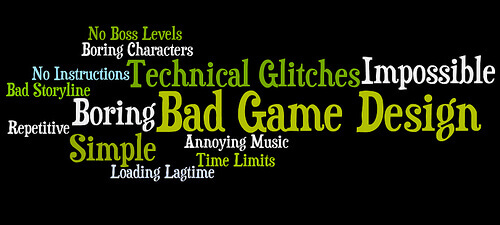 As I already said, talking about bad design is easy; we all do it, all the time.
As I already said, talking about bad design is easy; we all do it, all the time.
To start with, this can just be a simple reason, like “character X is boring”.
Keep asking questions until you can’t ask anymore, and you’ll have got to the root of the problem.
Fixing Bad Video Game Design
Fixing bad game design is sort of the same process as identifying bad design, but backward.
Think about how you fix the core issue you have with the game.
Perhaps you didn’t like having to hold X to run.
So you’d want to fix that – but how would that affect the next layer up?
Keep working up the chain, ironing out kinks, until you think you’ve ‘fixed’ the game into a more acceptable state. Then, after making note of what you changed and why work out what else needs fixing.
Sometimes it’s more about small changes than big ones and experiment with both little changes and literal game-changers.
Talking About Good Design
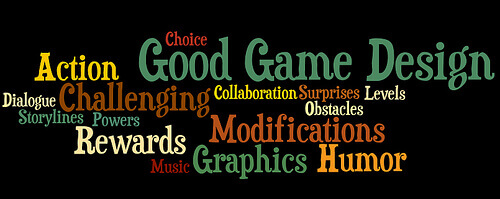 Good design is often harder to talk about because it’s much harder to identify why you like something than to identify what gets on your nerves.
Good design is often harder to talk about because it’s much harder to identify why you like something than to identify what gets on your nerves.
Thinking about good design often starts with a feeling; I like this game, I love this character, this mechanic works well.
Then, once you’ve begun to pinpoint what makes a good game great, you can begin to dig deeper.
Take mechanics for example – if you think a particular mechanic works well, why does it work well?
Perhaps you’re drawing a blank, but it’s easier to think about a change again – what would happen if you changed it for another mechanic?
This should help you identify what goes into making a game good.
But why did they do that?
Whether or not you think a design choice is good or bad, it helps to think about why the designer made that choice.
This is especially important for bad design choices – why did the designer not make a better choice?
Perhaps it was a limitation, perhaps they thought it was a good idea given other constraints.
This will help you talk about why designers made those choices and what you would do differently, but it will also give you insights into what it’ll be like when you yourself become a game designer.
Career Path Overview

I would be lying if I said there was one way into the industry as a game designer because there are so many ways to do it I couldn’t even count them all.
There are more common ways to get to be a game designer and more obscure roots.
For example, I got to be a designer by:
- Completing a degree in Artificial Intelligence (think robots tryna ing to read and understand, that was my dissertation project),
- Doing business training
- Starting my own studio
I am now a consultant designer.
Other people take a more traditional route, by studying game design-related courses at college and taking internships by the bucketful, before securing a position as a junior designer for a big game company.
By far the most common route involves:
- Game design-related courses and specializations at college
- Taking internships and work experience
- Securing a role in a large, established company (before moving on with their career)
The game designer career progression past junior game designer includes:
- Becoming a senior designer
- Becoming a lead designer on a project
- Starting your own consultancy (where you help other companies by helping them with the design elements)
- Or starting your own studio!
If the end result for you is game design, there are a number of ways to get here.
This guide covers the most common route, but remember to network and try other avenues because you never know exactly what’s around each corner.
Getting a Great Education
It cannot be stressed enough that getting into the best college you can definitely help your career; more established colleges often have:
- More links to industry
- More networking opportunities
- May even be able to set you up with an internship or two
You don’t need to be in an Ivy League school, but if you’re stuck for a choice over two-game design schools, go with the one with the better reputation.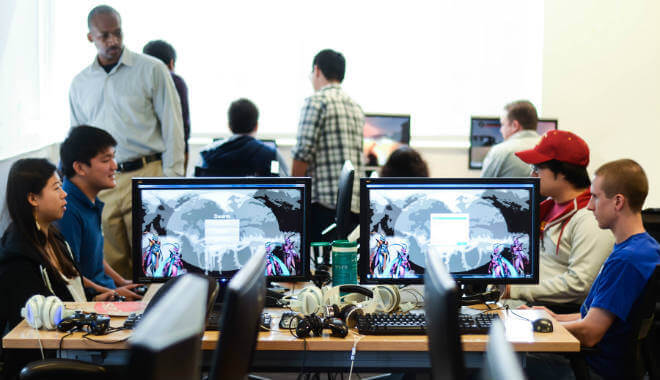
Top Online Game Design Program
Game design degrees vary by institution, but there are common elements to all game design courses:
Let’s look at each of the themes in turn.
Computer Science
Game Design
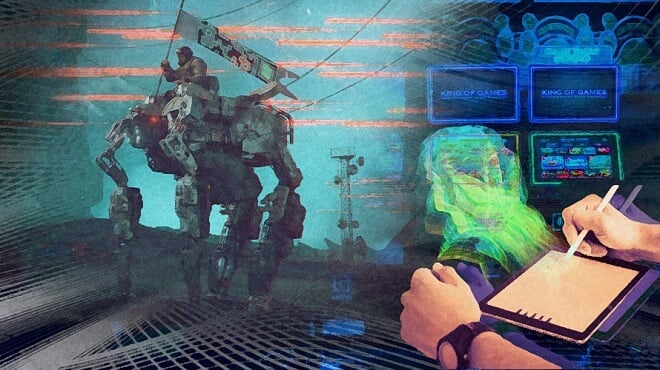
Arguably the most important part of a game design course is the bit on actually designing games.
- mechanics
- game logic
- storyboarding
- structure of design
- how to produce all the documentation that the design team will require of you (game design documents, character profiles, I could go on…!)
Programming
From algorithms to for-loops, you’ll know all about how to make a computer do what you want.
Mathematics and Logic
Other things to do at college
Work experience
How to find an internship
If you live near a city, send in resumes to any local studios.
If you live a little further away, offer to do work long-distance.
via Blogger https://ift.tt/2BpC2Li


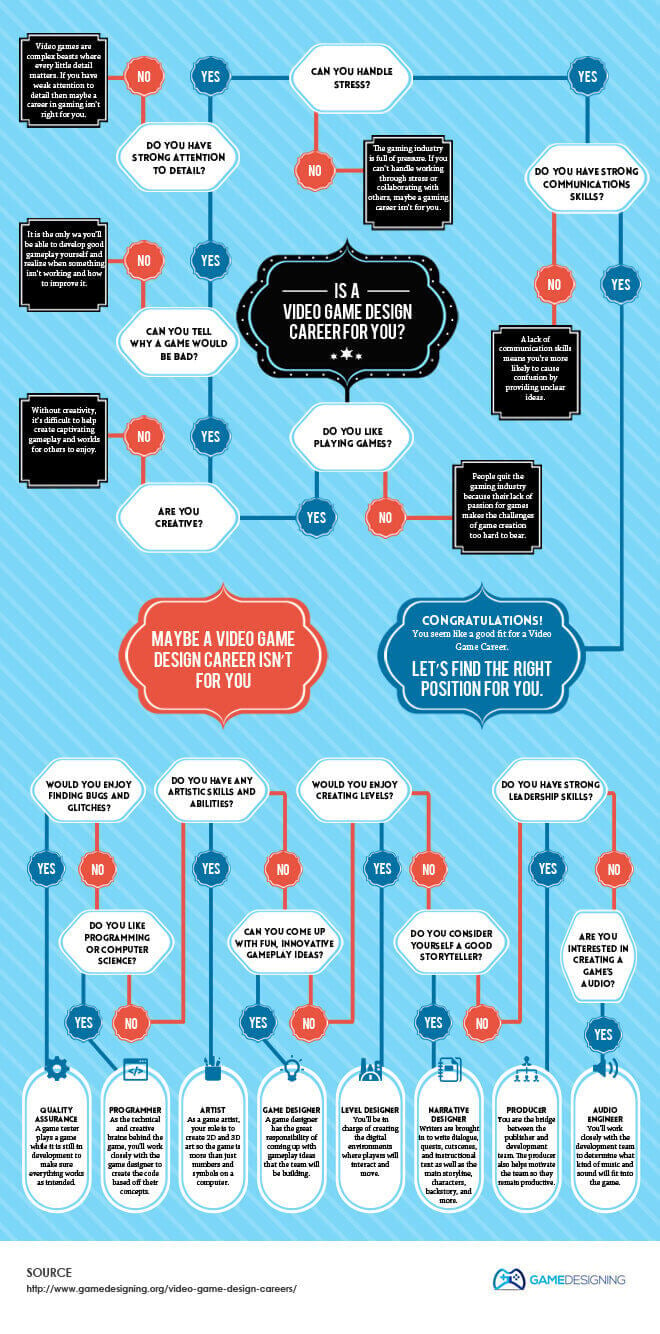




Leave a comment